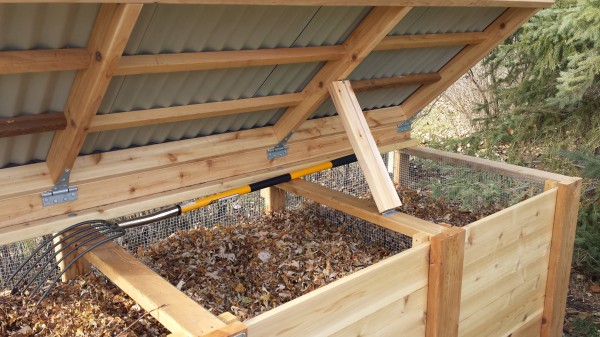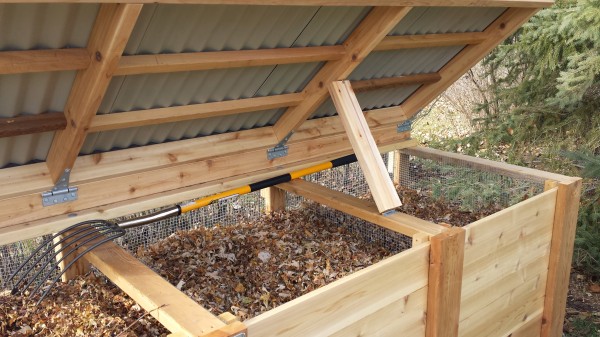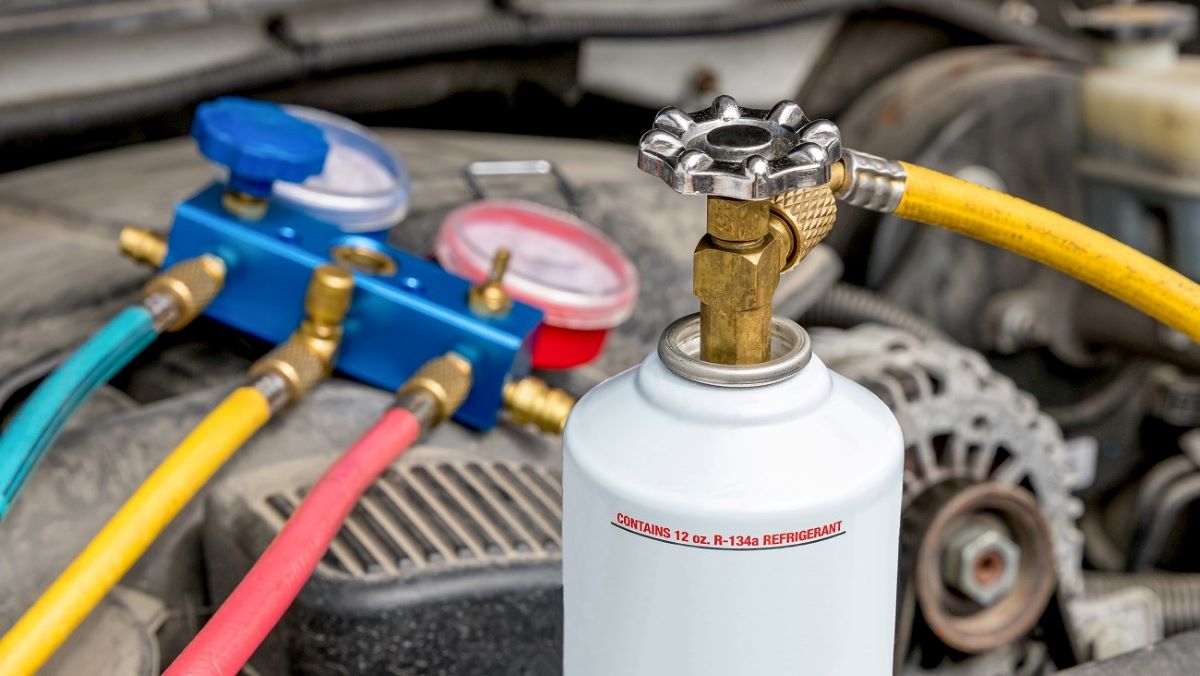What’s a triple compost bin, and why might you need one? Good question.
Most people don’t even have one compost bin. That’s according to a 2014 National Waste and Recycling Survey that found that 72 percent of Americans do not compost.
More than 40 million tons of food waste was generated in 2017, according to the EPA. Add to that yard waste generated from gardening, mowing, and trimming plants and trees and you have a lot of organic material that could be turned into valuable, nutrient-rich fertilizer and garden amendments instead of taking up space in landfills.

If you’d like to reduce your waste stream while creating free fertilizer for your yard and garden, setting up a triple compost bin rather than one compost bin can streamline the composting process.

Image courtesy of Instructables
Why Use a Triple Compost Bin?
A triple compost bin reduces the weight in your composting pile, which is important when you need to turn over the materials. Whether you use a standing bin or a rotating barrel or drum, wet materials and pounds of food, cardboard, and garden scraps really do add up. The three-bin system also allows you to continue to compost throughout the year, while also having compost readily available for when you need it in the garden.
In a three-bin system, the first section of the compost bin is for fresh scraps. This is when the composting gets started. As the food and yard waste start to break down, compost begins to form. But if you keep adding new waste on top of the compost that’s in development, it takes longer to get quality compost that you need to sprout spring seeds, fertilize a summer garden, plant fall bulbs, or add a layer of mulch to a dormant winter garden.
With a triple compost bin, fresh waste is kept in one section. As the compost begins to form, you can move the product to the second section, where it continues to decompose without the addition of any new materials. Then you can easily move the finished compost to the third bin for holding until you need it, without worrying about uncomposted waste in your compost.
How To Build a Triple Compost Bin
You’ll need some wood that is pesticide-free for the purest form of compost. That means no pressure-treated wood that is common for decks, home projects, etc. Seek out chemical-free woods such as redwood or cedar, especially repurposed wood, for the best rot-resistance.

Image courtesy of rnshaw
There are several plans available online for building a triple compost bin, such as this one from Instructables and this one from Countryfarm Lifestyles.
Among the key factors in building a triple compost bin is to include removable slats in the front of each bin for easy access to your compost. It’s easier to shovel the compost out of each bin if you can remove the slats. And by making the slats removable, you can adjust the amount of air circulating through your compost. You might also consider using metal fabric, chicken wire, or another material that allows air circulation for some of the walls of your triple compost bin.
Allow a space about 3 feet by 9 feet wide for a standard triple compost bin. Of course, you can use whatever size or method that works for your needs in your location. The thing that matters most, is to just start composting, regardless of how large your compost bin is!
Feature image courtesy of Instructables. Originally published on December 16, 2014, this article was updated in August 2020.
The post Three Times the Action: Build Your Own Triple Compost Bin appeared first on Earth 911.








